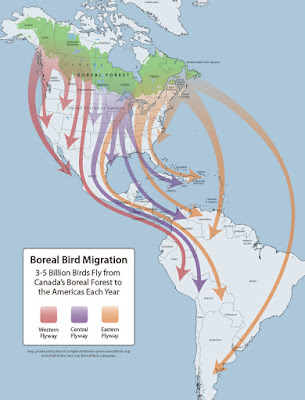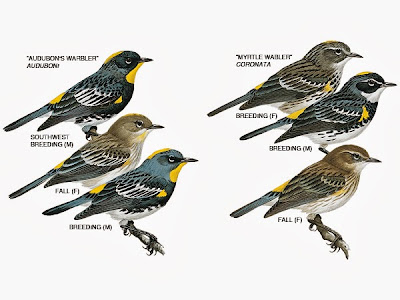Yes, Hanna (in Fargo) it's true — some female wood-warblers sing.
But not many.
Only two of our New World wood-warbler family members sing — Yellow and American Red-start — according to Jon Dunn and Kimball Garrett, author of the "Warblers" field guide (Peterson Guide Field Guide Series, Houghton Mifflin, 1997).
Then again, note Dunn and Garrett's findings are 22 years old. In recent years, researchers have witnessed several more female songbird order members expressing song. So, it's possible one or more other wood-warbler female species also perform song renditions.
Why do fewer females than males sing among songbirds? Speculation abounds, but one recent theory is that the majority of females previously sang, but through time lost their ability to do so
while males retained song as a primary function.
Then again, note Dunn and Garrett's findings are 22 years old. In recent years, researchers have witnessed several more female songbird order members expressing song. So, it's possible one or more other wood-warbler female species also perform song renditions.
Why do fewer females than males sing among songbirds? Speculation abounds, but one recent theory is that the majority of females previously sang, but through time lost their ability to do so
while males retained song as a primary function.
Next, note that wood-warblers are like most other songbirds. They experience a period of practicing a song in a stage that is called "plasticity."
Depending on the species of wood-warbler, true, definitive adult song is achieved by no later than the commencement of the following breeding season after a newborn singer arrives in a previous year's brood.
When that moment of virtuosity appears, it's called "crystalization" (when complete, full, learned song can be repeated by an individual).
Now there's a magnificent term that rings a chord of delight in any birder's heart.
(I still haven't revealed who the female singing species of wood-warblers are on the landscape. If you wish to know before the quiz deadline occurs, please feel free to email me:
danieledelstein@att.net)
Regards, Daniel Edelstein
Birding Guide
&
Avian Biologist


























